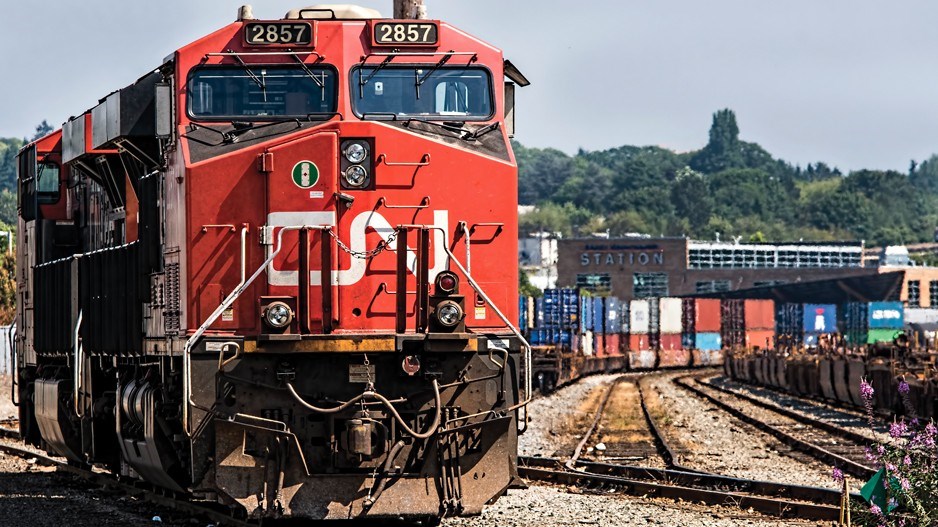The catastrophic wildfire that destroyed Lytton is a warning sign of not only climate change but also the negative impact of increasingly severe weather events on a crucial link in Canada’s economy and trade structure: rail transport.
That is the opinion of experts and academics who said the July disruptions to rail lines – vital to the flow of Canadian commodities across the country and beyond – will likely happen again if policy makers and society do not address the factors contributing to worsening wildfires in B.C.
“It’s a wake-up call for all of us,” said Gordon Lovegrove, board member at the Canadian Society of Civil Engineers and associate professor at the University of British Columbia’s Okanagan campus. “This is another symptom that we as a society have to respond to in a responsible and proactive way. Work with our stakeholders – inside and outside of government, as well as with the First Nations communities – because this issue has risen and slapped us in the face”
Earlier this summer, the massive Lytton fire, which was caused in part by a record-breaking heat wave that pushed temperatures to almost 50 C, not only razed the town and killed two residents, but also shut down train movements between Kamloops and Boston Bar for 48 hours “in the interest of safe railway operations,” according to the federal transport ministry.
Rail traffic for CP Rail (TSX:CP) and CN Rail (TSX:CNR) resumed soon after, but federal fire risk mitigation requirements instituted on July 11 included speed restrictions and increased equipment inspections.
A July 15-26 Port of Vancouver operational update confirmed “spot fires” or the “evolving fire situation” may continue and cause disruption, including “temporary stoppages of rail services.”
Things appear to be returning to normal slowly on the port’s July 30 operations update, where officials reported almost 69,000 feet of import rail being loaded out on the previous day. However, the port’s August 4 on-dock footage summary continues to show CN Rail’s import container shipment inventory at Deltaport and Fraser Surrey Docks waiting more than seven days before being loaded onto outbound trains.
Only CP rail’s import shipments at Deltaport are seeing wait times of less than three days, the report said.
Lovegrove noted that Ottawa’s move to restrict speeds and slow down the pace of rail transport through B.C. during fire season is a wise one, adding that it was crucial for officials to minimize the threat of fires caused by rail sparks and other equipment.
If another catastrophic fire like the one that destroyed Lytton hits the province – especially in an area where key rail lines are located – a shutdown of rail transport could deal serious damage to Canadian trade because commodities still make up a significant percentage of the country’s exports and most are transported to Vancouver and other ports by rail.
“Everybody realizes that we are still very dependent on rail in this country, whether it’s transporting coal, grains, cars or something else,” Lovegrove said. “It’s just who we are. It’s not going to change quickly.... So let’s take care of our environment first, then our social relationships within that – which then drive the economy.
“You can’t say that, ‘When you take care of the economy, then you can take care of the environment.’ That’s absolutely backwards.”
But one expert noted that even if the wildfire risks of the railway sector are minimized, the fundamental issues of why B.C.’s fire situation appears to be getting worse have not been resolved.
Fire ecologist Kira Hoffman said recent statistics show that human-caused wildfires in the province have been declining in recent years. However, she added that fires caused by lightning have been increasing and wildfires are bigger and are occurring much earlier in the year than in the past.
“When you put fires out in the past, what you get is an accumulation of dry and dead vegetation in these forests,” said Hoffman, who is also post-doctoral fellow at UBC and the Bulkley Valley Research Centre. “So you actually get more trees to burn, trees that fire naturally cleans up in the forest... Because we put fire out in the past, there’s a lot of material on the ground to burn, and when fires do start, they become more intense and get to points where we can’t suppress them.”
Hoffman agreed with Lovegrove that the answer to resolving the wildfire threat to Canadian rail transport goes far beyond the sector itself.
Hoffman, a former front-line responder to wildfires, said policy makers need a fundamental re-think of B.C.’s fire situation not as having a “fire season,” but instead proactively combatting the issue year-round by taking advantage of wetter winter months to conduct controlled burns.
“We need to increase the scale of prescribed fire and cultural burning,” Hoffman said. “These methods have proven very effective when used correctly, and there are a lot of cases where the Indigenous population is using controlled burning to limit fire risk to their communities.
“With more public buy-in and policy-makers’ support, we can start to think about a year-round model where we do fuel mitigation in the winter time, controlled burning in the spring and fall when it’s safe to do so, and then still needing fire suppression in the summer. It’s the realization that wildfires are always with us, instead of just using a response-based approach.” •




